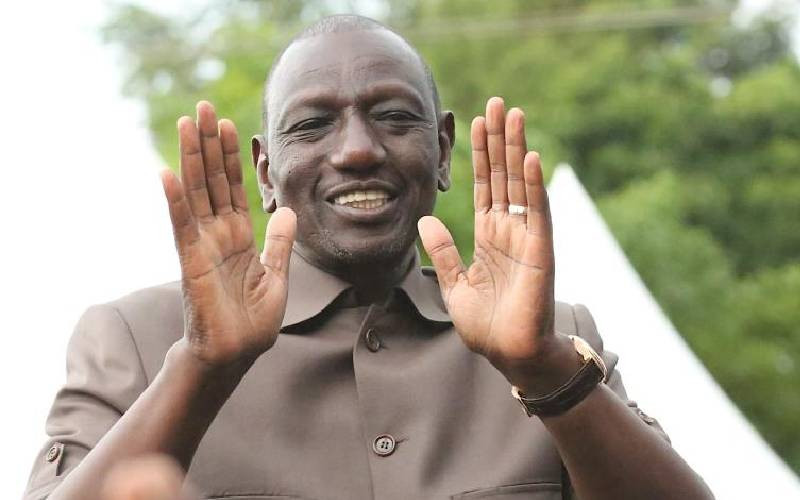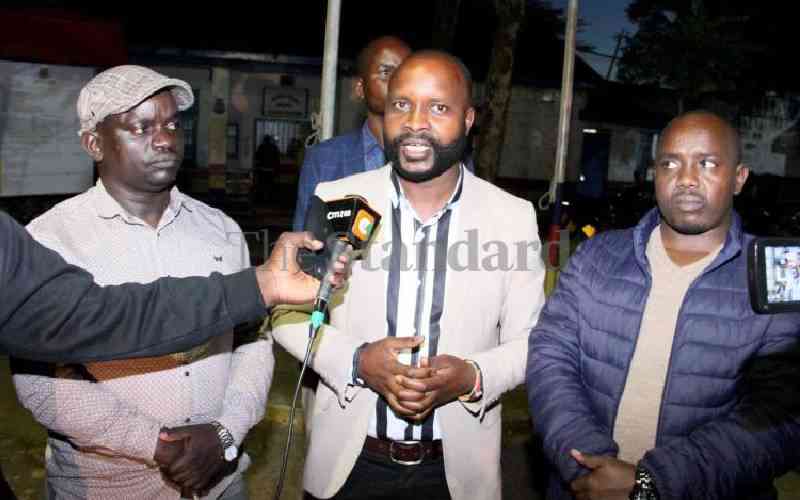By WAWERU MUGO
KENYA: If you call a rose by any other name, would it still smell as sweet? Well, it would not, according to founding President Jomo Kenyatta.
On November 12, 1970 the President went to open the Longonot Earth Station, which opened Eastern Africa to satellite communication. However, he was quite unhappy with the station’s name. “I’ve today decided to change the name of this station from Mt Margaret Satellite Station to Mt Longonot,” he said. “Mt Margaret is not an indigenous African name,” he said.
The name Longonot is derived from Maasai word oloonong’ot, which means “mountains of many steep ridges”.
Many people may not know that despite Kenyatta’s decree, the name “Mt Margaret” has stuck to this day and you will find it in modern satellite images, including those of the US military.
The President would spearhead a campaign to change European names of places and streets to those that reflected African heritage. Decades earlier, he had led by example by ditching his European name, Johnstone, and adopting Jomo Kenyatta.
The irony, however, is that even the name of the country Kenyatta governed had been prescribed by a European traveller, who saw and named Mt Kenya because he could not properly pronounce the name he was told by locals. The British colony would later be named after the mountain.
How did places get their names? The origin of some place names given by early white travellers makes for quite some interesting reading. They gave place names in honour of themselves, wives, friends, their rulers, pets and anything they could imagine.
While some names such as Murang’a were used soon after independence to replace those given by colonialists, many others survived. It would take nearly a decade for the founding president to order that the colonial names be changed, saying they reflected servitude.
Murang’a was previously called Fort Hall, after a colonial official who pointed out a place named Mbiiri as an ideal location to build a fort around May 1900. A new fort was built which had a “large, solid stone wall and ditch around buildings and offices,” according to Christine Stephanie Nicholls’ Red Strangers: The White Tribe of Kenya.
“Perched on top of a hill, the fort was strong and secure.” The present day Murang’a Town sprouted from this spot and was called Fort Hall until shortly after independence in 1963. Francis Hall died of dysentery on March 18, 1901, at Mbiiri.
According to former Central Bank of Kenya Governor Duncan Ndegwa’s Walking in Kenyatta Struggles, the name Murang’a was derived from “ng’a”, the sound made by hoes as local farmers encountered rocky soils.
And Lake Turkana, which was first called Rudolf, got the name of a friend of the first European explorer to “discover” it.
Those early explorers told heroic tales of trekking through the unbeaten track, sweltering heat and African bush. It was a battle for bragging rights as well as to map resources that would soon drive a mad scramble for Africa and its riches. Like treasure hunters of yore, they only heard tales of imposing mountains or lakes, and did anything to find them.
One of them was Count Samuel Teleki, a Hungarian explorer who was fascinated by tales told by explorers who had ventured into Eastern Africa before him. According to Kingley Holgate’s Africa: In The Footsteps of The Great Explorers, Teleki was a man who liked to smoke his German pipe continuously “and never wore his court to dinner.”
Stay informed. Subscribe to our newsletter
Holgate says Teleki wore his shirt wide open and sported a pot belly.
Locals had aptly nicknamed him Bwana Tumbo. One day, when camping near Kilimanjaro, he planned to find a lake reported to have been in the north of Lake Baringo. He told his friend: “…all African travellers are liars, and I’m going to become one. If I dont discover the lake, I shall say I did; If I do not discover a mountain, I shall say I did; and who will disprove it until long after I have received the credit?”
When he finally saw the lake in 1888, he named it after his friend, Austria’s Prince Rudolf.
It was 12 years after independence – in 1975 – that it was renamed Lake Turkana in honour of the community that lives on its shores.
Local names
Six years earlier, in 1969, President Kenyatta had decreed that all colonial names, which were of little or no significance to Kenya’s heritage, be replaced.
Kenyatta had travelled to Western Province and was in Webuye, where local leaders told of the great tourism potential in the area. There were natural forests, and the imposing Broderick Falls. That was good, he said, but why did such places still bear the names of foreigners? It had been named after the first white man to visit it and the Nabuyole Falls on River Nzoia.
“Which Luhya man was called Broderick?” asked Kenyatta. “Broderick was whose relative? A name is very important for identity. Which foreigner adopts your African names? If you want to domineer someone, conquer his intellect first and you will suppress him wholly.” He continued: “These are names reflecting servitude…Why can’t you look for better local names with local content, names we know of their origin?” Since then, the name was changed to Webuye Falls.
Kisumu had sprouted as a big market among local people in the 19th century. It thus derived its original name, Kisumo from “sumo”, meaning barter trade. Some accounts also say it also meant “a place to look for food,” which is consistent with a market.
However, in 1901, it was renamed Port Florence after Florence Whitehouse, the wife of the new railway’s chief engineer, George Whitehouse. The name soon reverted to Kisumu as pronounced and written by Europeans. Many other places were named in this manner.
But it was not just the names of places that needed to be changed. Many streets in Nairobi, for instance, bore the names of colonial masters and reflected the country’s dark history of white oppression.
Up to a decade after independence, most streets had colonial names. Queen Elizabeth Way was renamed Waiyaki Way, after the chief who resisted British occupation and is reported to have been buried alive by colonialists. Archer Road became Kabarnet Road, after the place where Vice-President Daniel Moi resided.
However, just like with the early explorers, some Kenyan leaders wanted streets, roads or other natural structures named to suit their own interests. Minister of State Mbiyu Koinange, for instance, wanted the road leading to his constituency renamed Kiambaa Road.
Colonial connotation
“As you will no doubt agree, Nakuru Road and Limuru Road have been with us for a very long time and to change either would seem inappropriate,” wrote City Planning Director J. Swai. Koinange was effectively stopped in his tracks.
The mayor also objected to the renaming of some streets, saying they had no colonial connotation. One of those that survived was Forest Road. Health facilities such as King George VI Hospital was renamed Kenyatta National Hospital.
Here is a look at some of the old street names and how they were renamed: Coronation Second Avenue became Harambee Avenue, after Kenyatta’s rallying call of pulling and pooling together.
Donholm Road became Jogoo Road (Jogoo is Kiswahili for cockerel, the symbol of the independence political party, Kanu.
Hardinge Street became Kimathi Avenue, after freedom fighter Dedan Kimathi. Delamere Avenue was renamed Kenyatta Avenue, after founding president Jomo Kenyatta.
Duke Road became Ronald Ngala Street, after Coast politician Ronald Ngala Princess Elizabeth Highway became Uhuru Highway to commemorate the country’s independence.
St Austin’s Road became James Gichuru Road, after Finance Minister and Kenyatta’s friend Government Road was renamed Moi avenue after the Vice-President. White House First Avenue was named Haile Selassie avenue, after Ethiopia’s emperor.
St Elliot street was renamed Wabera Street after Daudi Dabasso Wabera, a pioneer administrator and first African District Commissioner of Isiolo.
Sandler Street became Koinange Street. This is where the first Unga Group flour mill was located.
 The Standard Group Plc is a
multi-media organization with investments in media platforms spanning newspaper
print operations, television, radio broadcasting, digital and online services. The
Standard Group is recognized as a leading multi-media house in Kenya with a key
influence in matters of national and international interest.
The Standard Group Plc is a
multi-media organization with investments in media platforms spanning newspaper
print operations, television, radio broadcasting, digital and online services. The
Standard Group is recognized as a leading multi-media house in Kenya with a key
influence in matters of national and international interest.
 The Standard Group Plc is a
multi-media organization with investments in media platforms spanning newspaper
print operations, television, radio broadcasting, digital and online services. The
Standard Group is recognized as a leading multi-media house in Kenya with a key
influence in matters of national and international interest.
The Standard Group Plc is a
multi-media organization with investments in media platforms spanning newspaper
print operations, television, radio broadcasting, digital and online services. The
Standard Group is recognized as a leading multi-media house in Kenya with a key
influence in matters of national and international interest.









